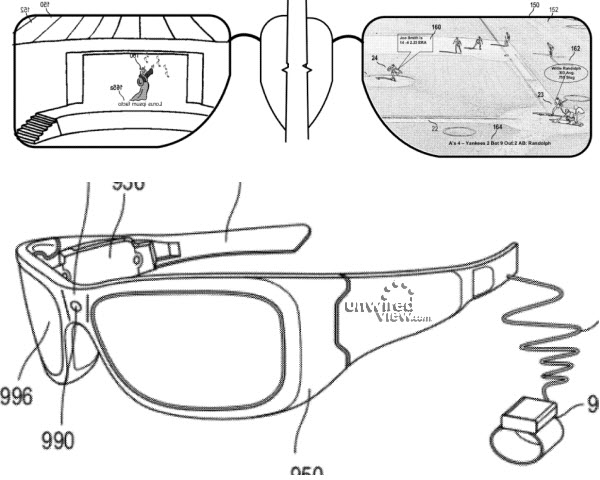Play all audios:
Microsoft had a new patent application published with the USPTO today (via Unwired View) which shows a glasses-based heads-up display system that could overlay information on the real world
for a user. If it sounds familiar, it’s likely because that’s what Google’s trying to accomplish with Project Glass, which actually already has functional prototypes out in the wild. The
device described by Microsoft is a little less ambitious, but maybe also a little more purpose-driven. The patent describes a tool that’s designed for use in specific situations where it’ll
be most relevant to a user – rather than being intended for all-day use, the way that Google seems to want to position Glass. So, for instance, you could pop on Microsoft’s glasses when at a
baseball game and view box scores from around the league, pitch speed information, pitch count and other info overlaid on your view. By acting in specific contexts instead of as a
general-purpose device, Microsoft’s design could help users get over what will certainly be an adoption curve for cumbersome wearable tech. Microsoft’s patent deal specifically with live
events, in fact, and is designed to be used pretty much in a stationary position, without compromising the field of view. Microsoft describes its capabilities as follows: > A computer
implemented method providing supplemental information to > a user with a head mounted display viewing a live event, comprising: > receiving an indication that a user is attending a
live event, the > live event having an event duration; determining a field of view of > the user through the head mounted display, and objects within the > field of view at the live
event; retrieving supplemental information > describing at least the objects in the field of view of the user > during a portion of the live event; determining elements of said >
supplemental information to present to the user in the head mounted > display; and displaying the supplemental information in one or more > display elements in the head mounted
display. Of course, an AR/HUD glasses device from Microsoft could also plug into its existing hardware ecosystem, maybe to produce combined experiences with the Xbox and Kinect. But this is
still just a patent, and one that was only relatively recently filed (May 2011), so even if Microsoft does go ahead and put this into production we won’t see it for a while. But getting some
patent skin in the game for this market, which could explode depending on consumer reception of Google’s early efforts, is a very good idea for Microsoft, especially given the
cross-platform ambitions it seems to be diving into head-on.

